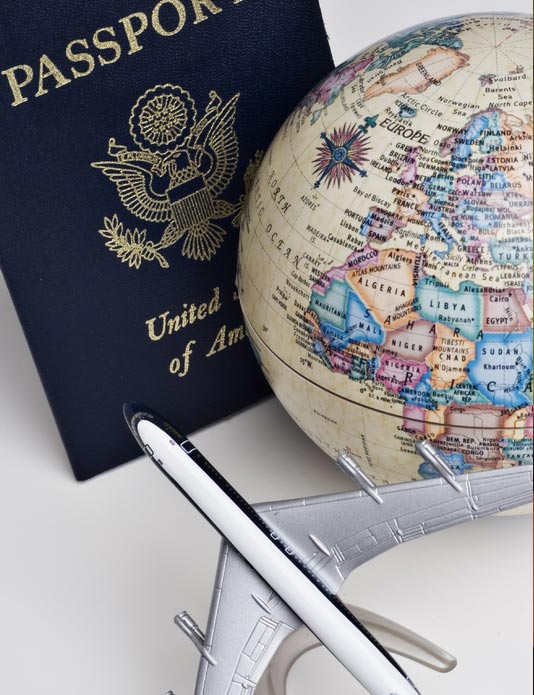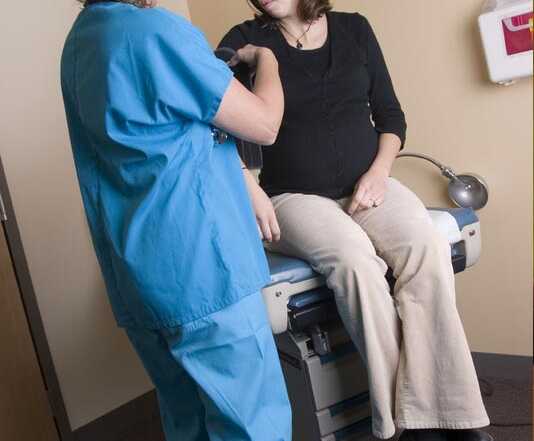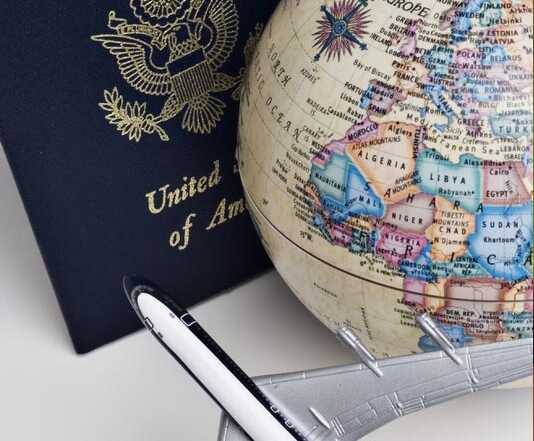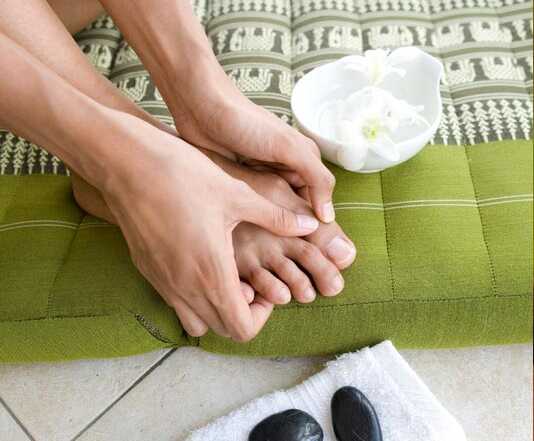
Are you going on vacation? … taking a business trip? … visiting relatives? … joining a sightseeing tour? Whatever your reasons, taking a trip will mean some changes in your life for a while.
Changes do require some planning. People with diabetes who use insulin have to be especially careful that the timing and amounts of INSULIN they take are balanced well with the FOOD they eat and the ACTIVITY planned for the day.
About Food
Eat something – a meal or a snack -about every 4-5 hours
Try to choose foods prepared without fat – steamed, baked or broiled.
Test your blood glucose after you’ve eaten any foods that you’re not used to eating.
If the big meal of the day will be served late at night, you may want to eat a snack at your usual supper time, and omit your bedtime snack.
In some parts of the world, breakfast is very light so you may want to have something extra to add to it.
Watch those calories – they can add up fast when you’re eating away from home.
In some countries, bacteria makes drinking water and food unsafe. Bottled drinks, bottled water (nonlocal) and boiled water are okay, but ice cubes are not. Ask a travel agent about foods to avoid in the country you are visiting.
About Activity
If you
… Walk more than you’re used to … play an active game or sport … stay up late at night … are under unusual emotional strain.
… Your blood glucose test result will help you decide if you need more food to bring your blood glucose level up into the normal range. Ten to 15 grams of a combination of carbohydrate and protein (like fruit and cheese or a peanut butter cracker) should be enough.
… It takes a little time before the insulin you inject reaches the point when it has the most strength. Ask your healthcare professional to explain insulin timing (or call Novo Nordic at 1-800-727-6500), and try to avoid strenuous exercise when your insulin is working at its full strength.
About Monitoring
Monitoring your blood glucose level is just as important when you’re traveling, as it is when you’re at home – maybe more.
Some compact meters are easy to carry with you.
Use your diary to write down the food(s) you ate and your activities in connection with your blood glucose test results, so you can review it the next time you take a trip.
About Insulin
Take enough insulin and syringes for your trip, plus a little extra. Insulin delivery systems, such as a pen-like device or a syringe profiled with insulin, used with a disposable needle, may be more convenient than a syringe and vial, especially for travel. Ask your doctor or call Novo Nordic at 1-800-727-6500 for more information about these systems
Novocain® human insulin (rDNA origin) is available in Regular, NPH, and Lente®. And 70/30 (70% NPH and 30% Regular, premixed).
If you use a pump, be sure to take back-up supplies of insulin and syringes, as well as extra pump supplies. Talk to your doctor about resetting the pump if you are changing time zones. You might want to take your user manual with you.
Storage
Unopened vials should be kept in their cartons in a refrigerator; using an insulated container during travel will protect the insulin from extremes in temperature.
Do Not Use Insulin…
If it has been frozen or exposed to very hot temperatures.
If refrigeration is not possible, insulin should be kept in a cool place away from heat and sunlight.
If you keep insulin in a plastic bag in a wide-mouthed thermos jug lined with a wet washcloth, the insulin bottles stay cool and protected from breakage.
Prefilled syringes or cartridges containing intermediate-acting insulin can be kept at room temperature for 7 days; regular insulin in a profiled syringe or cartridge can be kept at room temperature for 30 days. Insulin should not be left in a car or in any place where extremes of temperature are likely to occur.
Before You Go
Visit your doctor or diabetes educator and ask for…
A signed letter on the doctor’s letterhead hat explains: that you have diabetes (and any related medical information) that you must carry insulin and syringses your current treatment (including any medicines you are taking besides insulin) any allergies or sensitivity to food or medicine.
instructions to others about how to help you in a diabetes-related emergency any inoculations you need – get them well in advance, if you can, so
Any reactions will be over before your trip.
Recommendations for medications you might need for motion sickness or diarrhea.
Guidelines for treating other illnesses and for making adjustments in your treatment plan. For example, if you plan to fly and will be changing time zones, talk about possible insulin schedule adjustments. If you are going west, your first day of travel will be more than 24 hours, so you may need extra insulin. If you’re going east, the day will be less than 24 hours, so you may need less.
Ask about taking Regular insulin even if you don’t normally use it. Regular is good for short-term extra injections, and during illness.
See your dentist, so your chances for unexpected dental problems are reduced.
Packing Up
Keep your supplies with you, not in your luggage. Besides insulin, syringes, pump supplies, prefilled syringes, you’ll need your blood glucose testing equipment and some food for treating low blood glucose -peanut butter or cheese and crackers, hard candies, glucose gel tablets. Also put any other medicines you are taking in your travel kit.
And Remember…
Comfortable shoes that fit well – not new ones
New socks or stockings – holes or darned
Spots can hurt your feet if you get blisters, don’t break them unbroken skin is less likely to get infected
Sunblock, if you’ll be in the sun, and lightweight clothing that covers arms and legs.
An extra pair of glasses
WEAR YOUR IDENTIFICATION BRACELET AND CARRY THE ID CARD THAT SAYS YOU HAVE DIABETES.
On Your Way
If possible, travel with a companion who knows how to test your blood glucose and understands what you might need in an emergency.
If you are traveling alone, you might feel more comfortable if some responsible person in the situation knows that you have diabetes (in case of an unexpected insulin reaction) – A flight attendant, the train conductor, someone in the hotel’s management, your host or hostess or tour guides.
Travel light or get help carrying heavy luggage.
Allow plenty of time so you don’t have to race to catch trains or planes or taxis.
Plan overnight stops to ensure a full night’s rest.
If You Go By Plane…
The in-flight meal might fit into your meal plan or you can order a special meal by requesting it when you make your reservations, but be sure to confirm it with the airline 24 hours before the flight.
Get up and walk around every 20-30 minutes.
Try not to sit for long periods with your legs crossed.
Have snacks ready in case of delays.
Lessen ‘jet lag’ problems: don’t drink alcohol before or during the flight!
Drink plenty of liquids before and during your flight – eight glasses of water or diet soda – unless your doctor says otherwise.
If You Go By Train Or Bus Or Boat…
On the train you can stretch and walk and eat as needed. Take advantage of bus stopovers to walk around. Be sure to have extra snacks along in case of delays you can make arrangements for special meals on a cruise.
If You Go By Car…
Stop and walk around at least every 2 hours. Your blood glucose test will tell you how much snacking you should do during the trip. Children seem to need slightly more calories than usual when traveling.
When You’re There
Plan ahead each day and adjust your schedule for Food, Activity and Insulin.
Take snacks with you if you’re hiking or sightseeing where no food is available.
Don’t wear anything tight around your ankles and legs that can hurt circulation.
Protect your feet from heat and injury – going barefoot (even at the beach) is too risky.
Don’t forget to have fun!
Planning your Meals
Eating healthy foods is one of the basic tools of diabetes care. [...]
Gestational Diabetes
Thriftway Pharmacy Gestational Diabetes Gestational diabetes mellitus (GDM) is a [...]
Traveling with diabetes
Are you going on vacation? ... taking a business trip? ... visiting [...]
Caring for your feet
It is important to take special care of your feet when you [...]
Exercising with diabetes
Exercise is good for everyone. But it can be especially good for [...]
Diabetes Center
If you have diabetes, you know that it can cause serious problems, [...]







